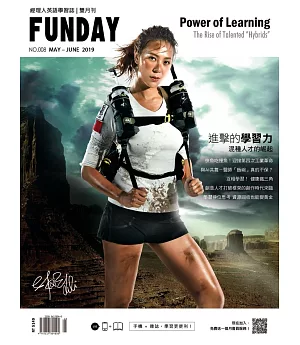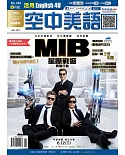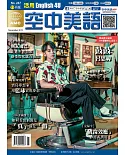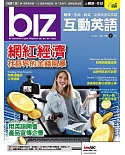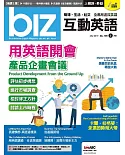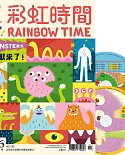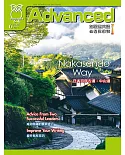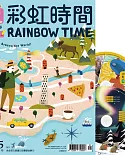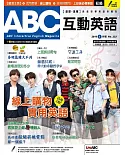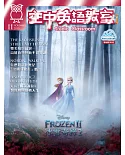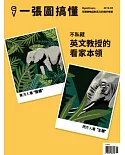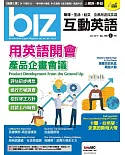封面故事
〈快魚吃慢魚!迎接第四次工業革命〉
《2018全球汽車產業未來趨勢報告》指出,2030年將是汽車產業重大轉型的關鍵年,無人駕駛的電動車將滿街跑,今年3月,各家汽車大廠就已紛紛宣布「登月」計畫,其中豐田汽車與日本宇宙航空研發開發機構(JAXA)聯手製造的「月球探測車」,預計在2029年就能從地球的柏油路開到月球表面。遙想約50年前的7月20日,阿波羅11號才成功地搭載太空人登陸月球,而阿姆斯壯更在全世界的注目下,踏出了那象徵人類進步的一大步。
1885年卡爾·賓士正興奮地開著史上第一輛以汽油為動力、時速最高才達16公里的「賓士一號」上街,但當所有人看到這輛貌似馬車的「鋼鐵怪物」,突然撞到牆上,除引起一陣恐慌外,更讓人懷疑它的安全性,而英國國會更對這台會「行走」的交通工具訂了相關法規,只要看到卡爾試車時,警車就必須出面制止。不過卡爾仍不分日夜地研發製造汽車,即使無法試車、更無人願意購買。
1888年
8月,卡爾的妻子貝爾塔·賓士趁著老公熟睡時,帶著兩個兒子駕駛著試驗中的賓士三號,從家裡一路開往遠在106公里外的娘家,途中為了加油而駛進村莊的藥局買清潔用的汽油時,當時的村民看到貝爾塔開著這台沒有馬仍會前進奇怪機械時,都驚恐地大喊「讓鋼鐵怪物運作的女巫來了!」但這趟來回6天、被譽為「世界首次汽車旅行」,憑藉著不顧眾人眼光的勇敢與毅力,在沒有任何人指導下,不僅從根本上消除了買家對汽車的疑慮,更使汽車走入人們的視野。
人類社會之所以會不斷進步與改變,多半源自於對事物現象無知帶來的恐懼,直到有先知先覺者敢於去認識了解,甚至利用它進行改革或其它的發明,才會有現今科技文明的持續演進。正如同汽車技術的改革,人類對於機器人的想像乃至於恐懼,早在科幻小說家艾西莫夫(Isaac Asimov)1942年的代表作《我,機械人》(I,
Robot)內就已探討,並於2004年改編成電影《機械公敵》,探討2035年的美國人相當依靠擁有人工智慧且不會傷害人類的「自動化家事助手」,不但會高度思考,還擁有酷似人類的情感,甚至完全不受人類控制,進而產生一連串的人機衝突。
世界經濟論壇創辦人與執行主席克勞斯.施瓦布於其著作《第四次工業革命》中提到:「第四次工業革命正如海嘯般地席捲全球,『快魚吃慢魚』才是這個新世界的生存法則!」書中同時也表明,雖然在未來5年內,全球15大經濟體將有510萬個工作,因為機器人和人工智慧的興起而消失,但是,只要你我做好迎接這波科技海嘯的完善準備,並且打開眼睛與內心深度剖析:「我是誰?我與別人之間最大不同的優勢與劣勢各為何?」從現在起跨領域多方面學習,當別人還是「斜槓青年」時,就先進化成擁有多方面技能的「混種人才」。
我們得抱持一顆圓融的心,學習與AI化敵為友,並借助它的大數據與快速的學習力,在職場上與其共舞通力合作。比如說當記者專注在深入專題企畫,可以讓AI收集相關數據與製作圖表,而醫師不僅可透過AI協助,研判容易被誤診的超音波或X光片;至於心理諮商師也可由AI小老師引導那些不愛面對人群的重度患者,娓娓道出自己的病情,以利諮商師下個階段的談話。
我們得抱持一顆圓融的心,學習與AI化敵為友,並借助它的大數據與快速的學習力,在職場上與其共舞通力合作。比如說當記者專注在深入專題企畫,可以讓AI收集相關數據與製作圖表,而醫師不僅可透過AI協助,研判容易被誤診的超音波或X光片;至於心理諮商師也可由AI小老師引導那些不愛面對人群的重度患者,娓娓道出自己的病情,以利諮商師下個階段的談話。
Ushering in Industry 4.0:“It’s the Fast Fish Which Eats the Slow Fish.”
The “2018 Global Automotive Industry Future Trend Report” marks 2030 as a transformative year for theautomotive industry as unmanned electric vehicles are set to run the streets. In March of
this year, somecarmakers unveiled plans to have their vehicles land on the moon. Toyota Motors announced that it hadjoined hands with the Japan Aerospace Exploration and Development Agency
(JAXA) to develop a moonrover for a 2029 landing. Some 50 years ago on July 20, 1969, the Apollo 11 successfully landed on themoon, allowing Neil Armstrong to take “one big step for mankind.”
Merely half a century later, human beingshave made huge strides in the area of technological innovation.
Looking even further back, in 1885, Karl Benz excitedly drove the first gasoline-powered “Benz No. 1” at a speed topping out at 16 kilometers per hour. Onlookers gasped in horror as they
watched the “steel monster” smashing into a wall. The public was fearful of the invention and questioned its safety. The British Parliament reacted by enacting regulations limiting this
“automobile.” The police were ordered to stop Karl Benz and his vehicle if they were seen on the road. It seems that the “monster” was not so much Benz’s invention as what it
represented—“change”. Nonetheless, the unappreciated inventor continued to work on his cars day and night, even though he wasn’t allowed to properly test them, let alone sell them.
In August of 1888, while Karl was sleeping, Bertha Benz, Karl’s wife, drove her two sons all the way from their home to her mother’s home 106 kilometers away. On the way over there, she
stopped by a village pharmacy to buy detergent gas to fill the gas tank. The villagers saw Bertha driving this strange machine and screamed in horror, “A witch in a steel monster has come!”
She returned six days later, completing what is known as “the automobile’s maiden voyage.” Courage and perseverance in the face of criticism and disdain helped eliminate the world’s doubts
about the automobile. Fear quickly subsided and the automobile soon became a fixture in people’s lives.
Society continues to progress despite the fear and trepidation of the general public, thanks to the visionaries who had the courage to break from norms to make their visions a reality. Just
as the “metal monster” created the automobile industry, a new age is now on the horizon. Propelled by both imagination and fear, the coming age of AI and robotics has long been considered the
next evolutionary step for mankind. This idea was first truly explored in the masterpiece “I, Robot” by science fiction writer Isaac Asimov in 1942. The book was subsequently adapted into a
movie of the same name in 2004. Asimov envisioned a world in which Americans relied on human-like robot assistants in the year 2035. With high intelligence and near human-like emotions, these
robots had been programmed not to harm humans. However, they were left completely uncontrolled, which led to a series of conflicts between the humans and robots.
In his book The Fourth Industrial Revolution, Klaus Schwab, founder and executive chairman of the World Economic Forum, writes that the fourth industrial revolution is sweeping the world like
a tsunami. “In the new world, it is not the big fish which eats the small fish, it’s the fast fish which eats the slow fish,” writes Schwab. The book predicts that in the next five years, 5.1
million jobs will disappear in the 15 largest economies of the world because of the rise of robots and artificial intelligence. However, as long as people are ready to meet this technological
tsunami head-on, with an open mind, we can brave the storm. Fundamental questions such as “Who am I? What are my biggest advantages and disadvantages over others?” will need to be asked and
answered by current and future generations. From now on, the well-rounded candidates will be the most sought after. While others specialize in one skill, the most successful people will have
a mix of talents and skills.
We will have to learn to work with AI and use its big data and fast learning capabilities to make the workplace hum. When journalists focus on in-depth projects, for example, AI can assist in
aggregating relevant data and in producing graphs and charts. Physicians can use AI to assist when ultrasound or X-rays are taken, so as to decrease the chances of misdiagnosis. In the field
of psychology, an AI counselor can counsel patients who are embarrassed to speak about their conditions to other people, helping to facilitate their next stage of treatment.
All industries should study the brave and decisive spirit of Karl Benz. Whether it’s pioneering innovation or changing the industry from the inside, being ready for the coming wave of change
is much better than washing up on the shore after the storm. Whether the newest challenge facing us is AI, robotics, Internet of Things or blockchain computing, those willing to open their
minds and learn to develop new skills will not be left drowning in fear. Instead, they will rise above the tide and ride the next wave of change.
雜誌目錄
專題文章/
08 快魚吃慢魚!迎接第四次工業革命
Ushering in Industry 4.0: “It’s the Fast Fish Which Eats the Slow Fish.”
14 與AI共舞:醫師「飯碗」真的不保?
Can Doctors Compete with AI?
18 化敵為友:創意人才打破框架的時代來臨
Frenemies? Can Artists and AI Break Boundaries in Techno-Culture?
20 互相學習! 健康鐵三角
A Healthy Exchange of Information and a Good Investment
22 學習換位思考 資源回收也能變黃金!
One Man’s Trash Is Another Man’s Treasure
特別專訪/
26 別把挫折放大,專注在前進的道路上
Step Back from Setbacks and Focus on Moving Forward
30 君子不器,傾聽內在的聲音
The Scholar’s Inner Voice
34 內化學習DNA,讓老闆看到你的價值
Making Yourself Invaluable
36 池塘裡的大魚,慢慢來比較快
Slow and Steady Wins the Race
40 學以致用,零殘忍「純素皮革」
Switching to Cruelty-free “Vegan Leather”
專欄/
46 有心就回得去
Higher Education in Taiwan: It’s Not Too Late to Move Forward
48 混種人才的崛起
The Rise of Talented “Hybrids”
特別企劃/
50 了解「構句」才能與世界溝通無障礙!專訪 FUNDAY教學部副主任
52 影音加童話,讓學習生動更有趣
時事精選TREND/
56 AI新聞快又準 五分鐘寫了4萬篇
Robo-journalism Is Shifting the Media Landscape
58 結對程式設計 區塊鏈工程師最夯
The Hottest Jobs in Software Engineering
60 歐盟環保領頭羊 禁用一次性塑膠製品
The EU’s Ban on Plastic
時事精選LIVING/
64 村上春樹新里程 平成時代代表書
The Book That Best Represents the Heisei Era of Japan
66 工時越長,效率越低!感到疲倦前就休息
Tiredness Reduces Productivity
網路書店
類別
折扣
價格
-
新書95折$142

